Delegation of abbots and brethren of UOC monasteries on pilgrimage to common Christian holy places in Egypt
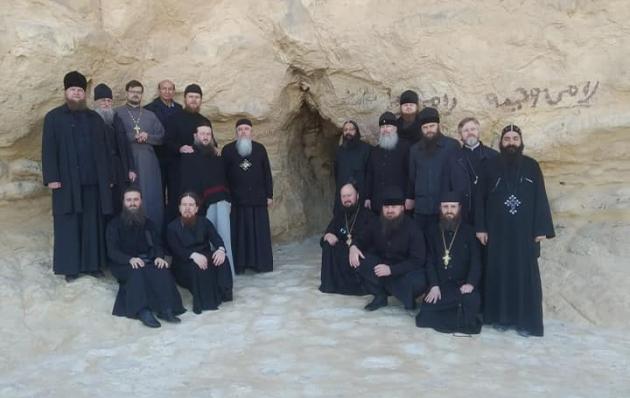
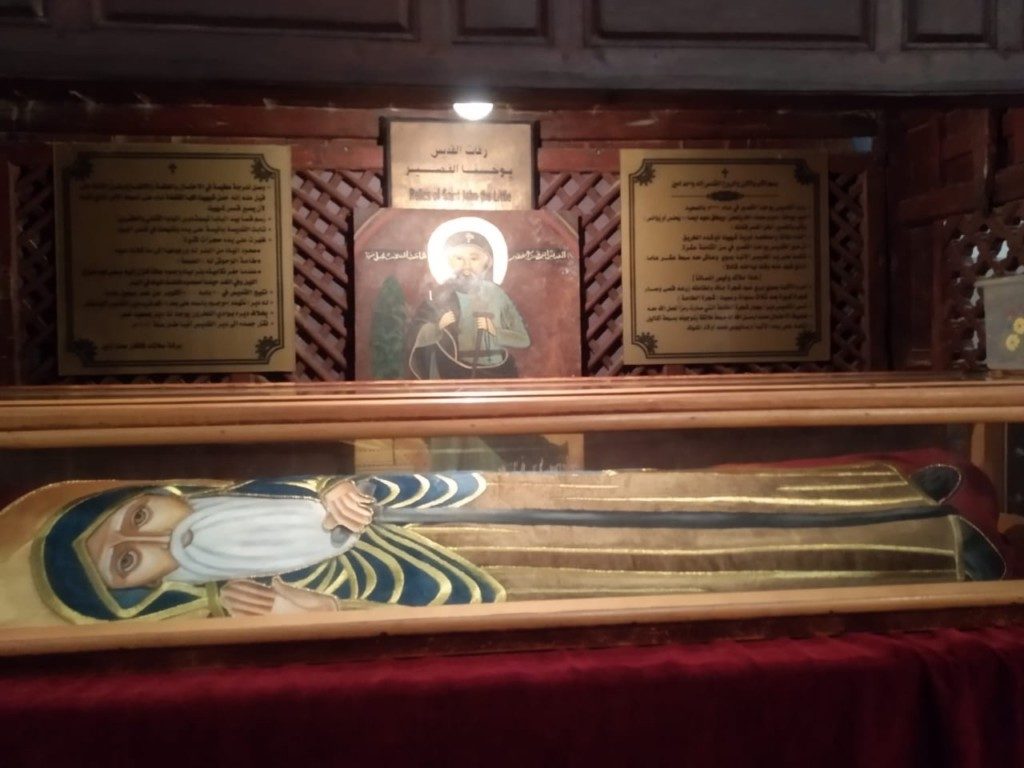
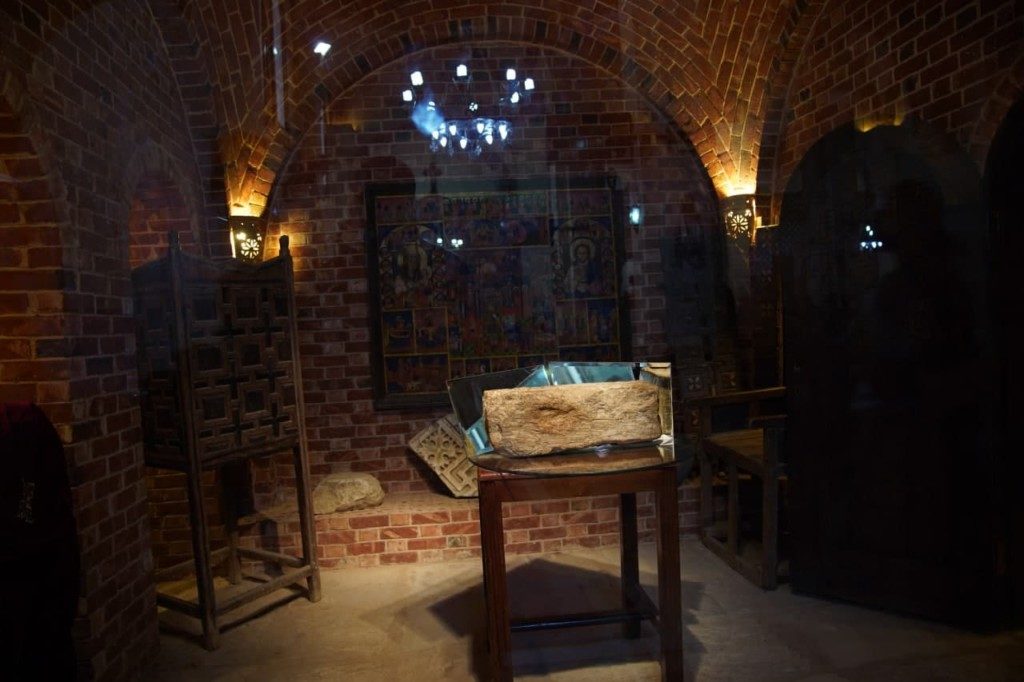
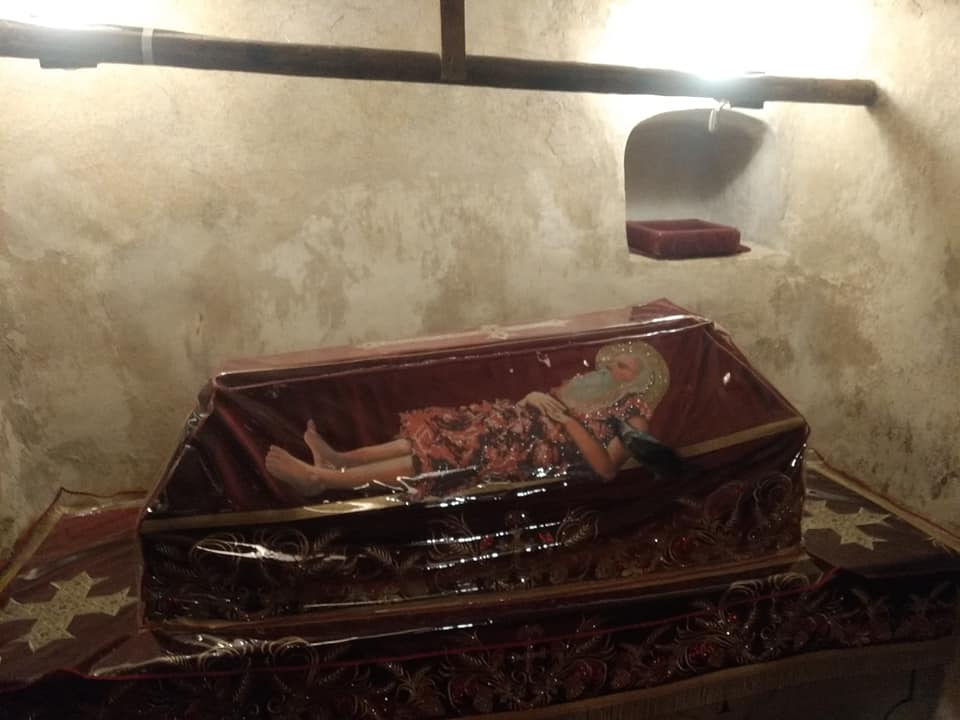
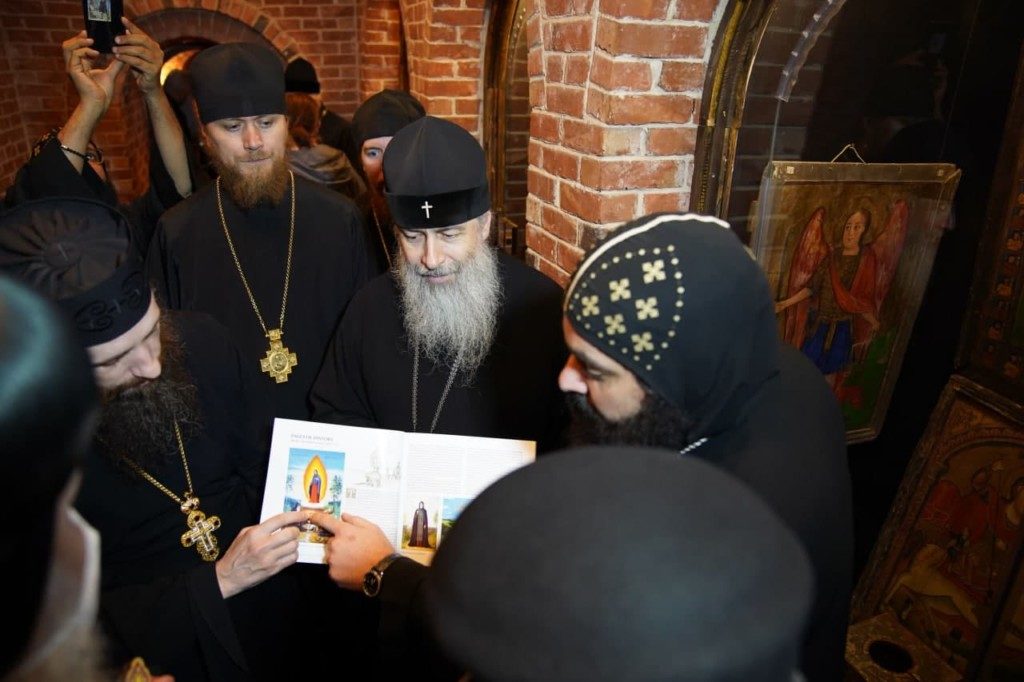
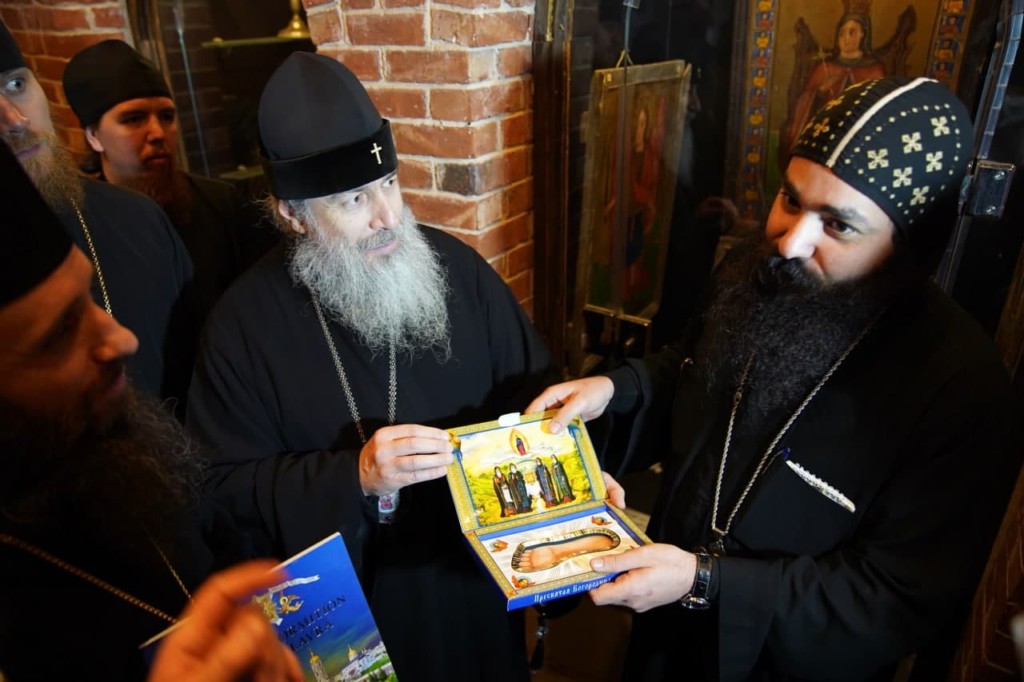
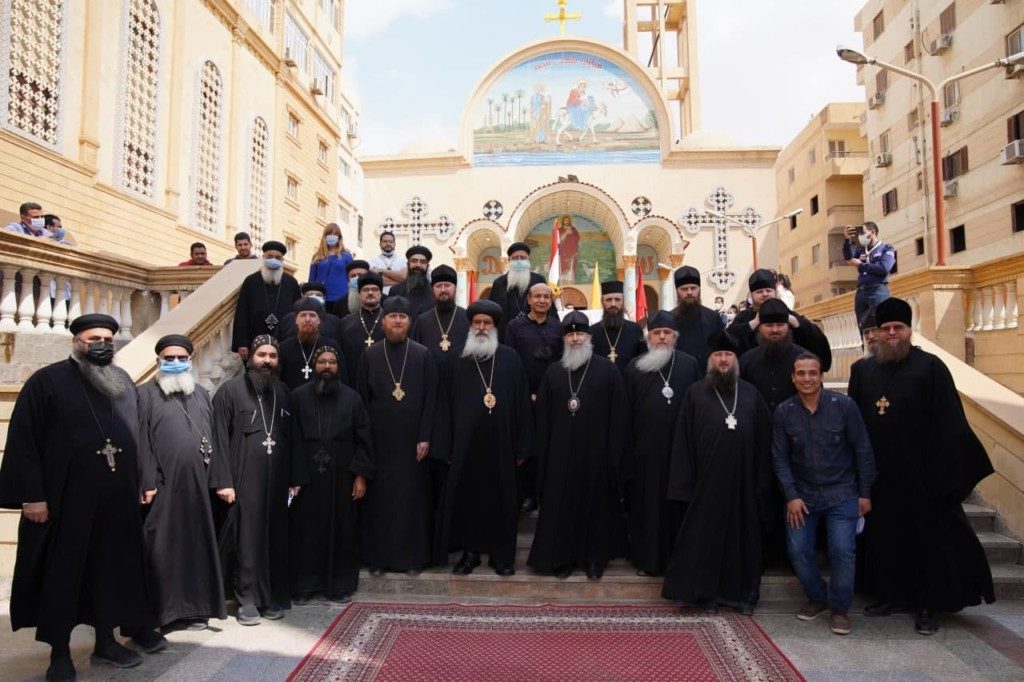
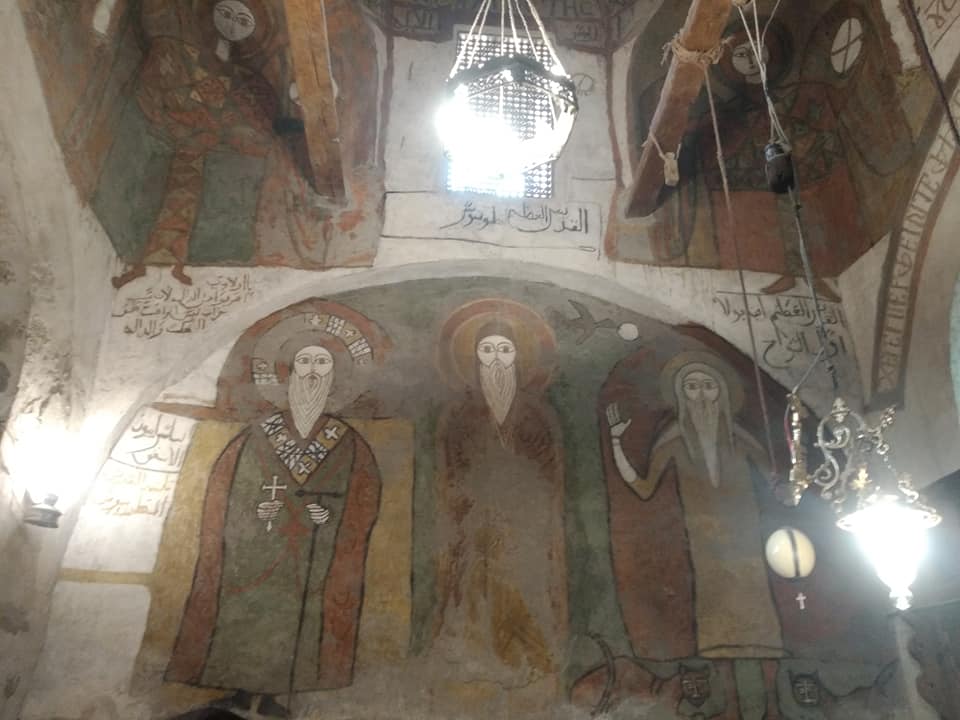
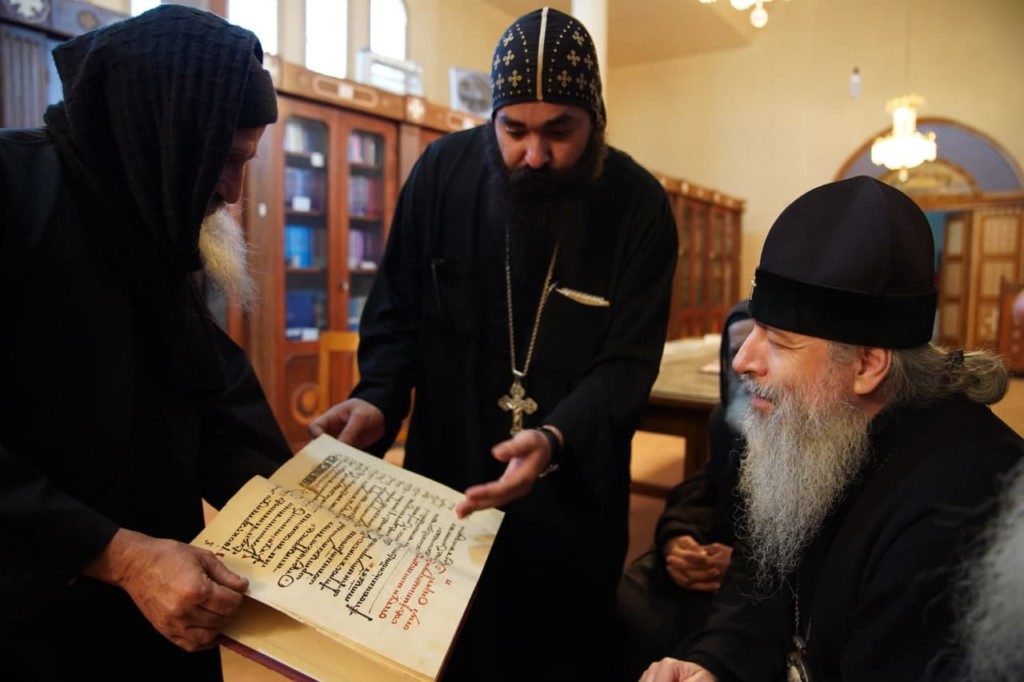
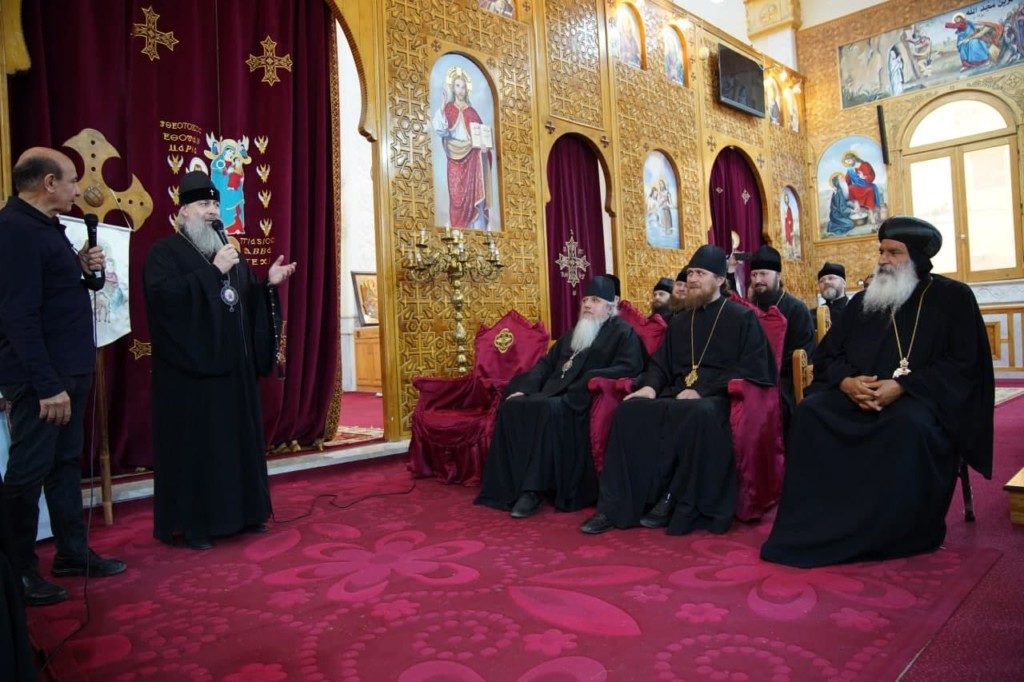
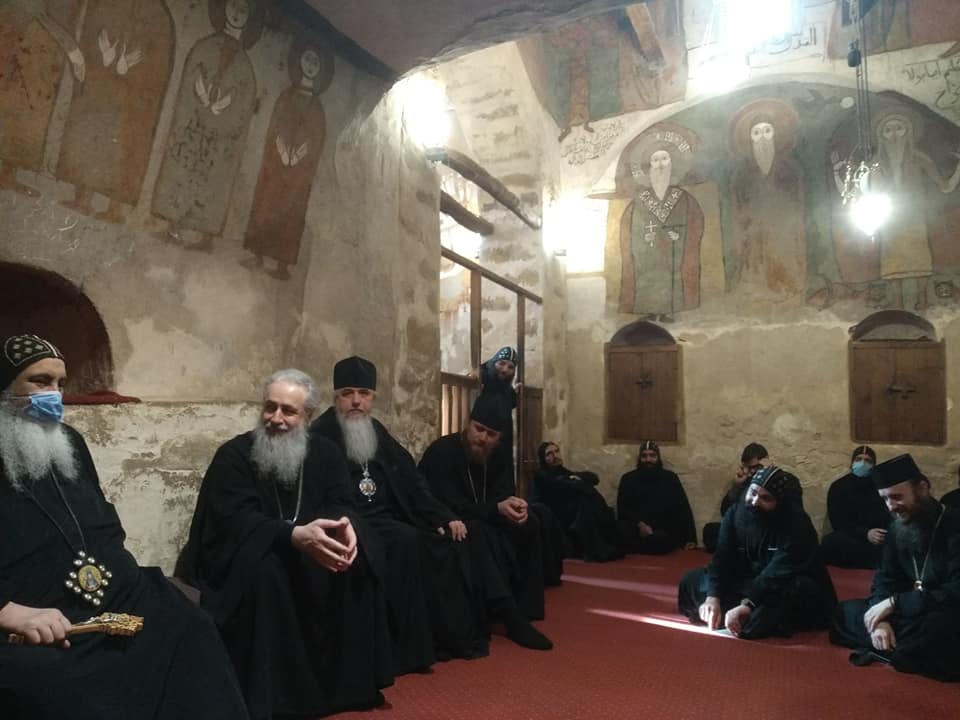
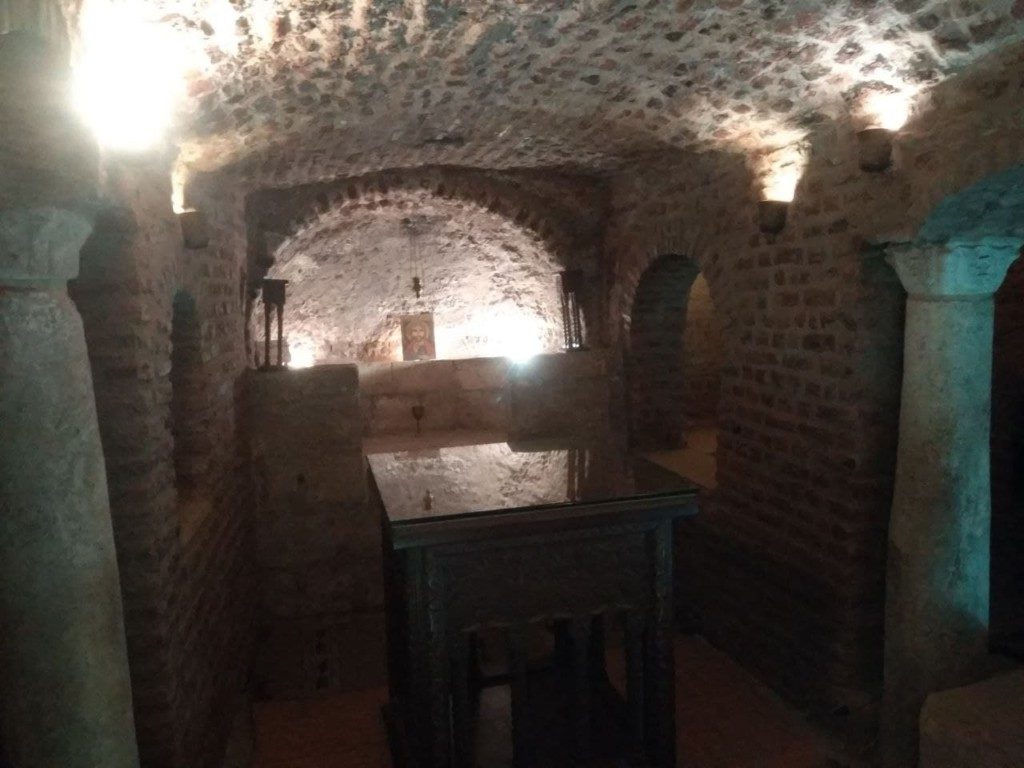
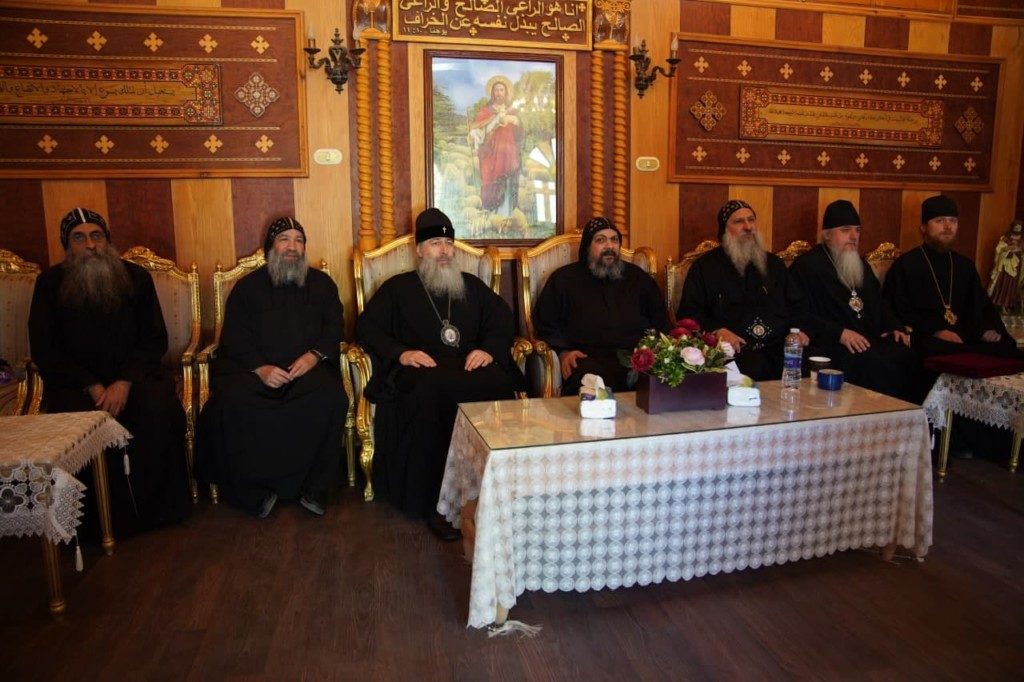
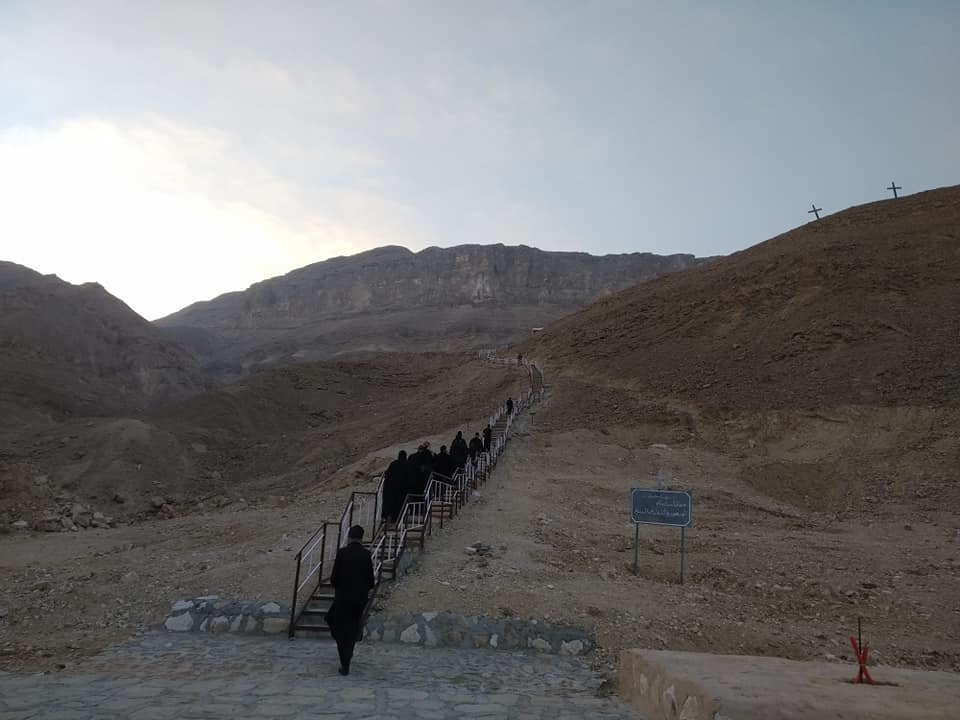
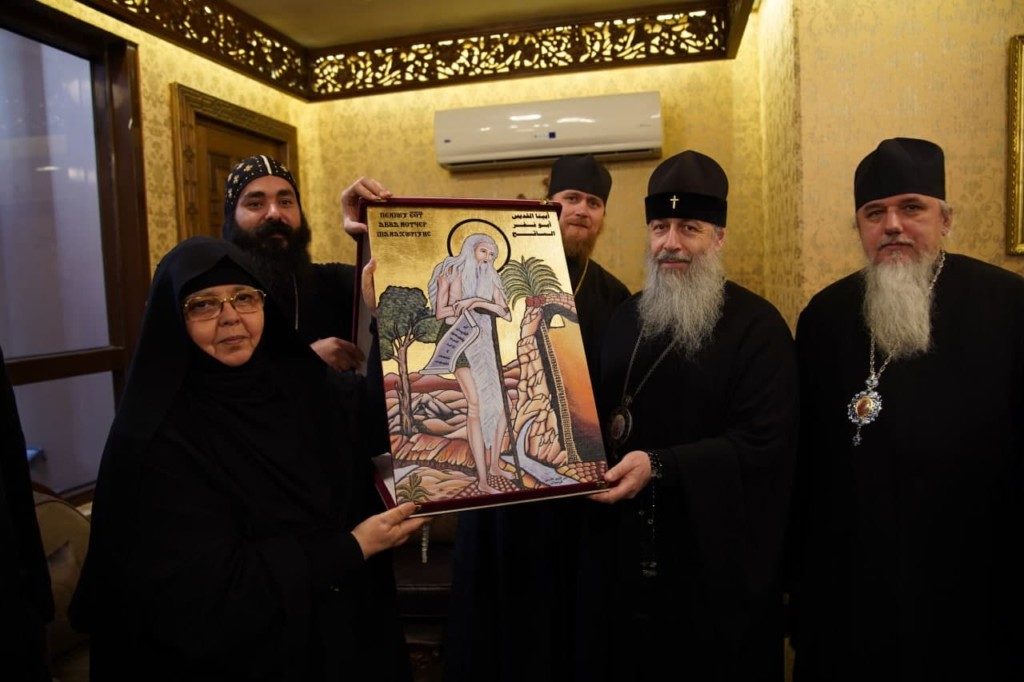
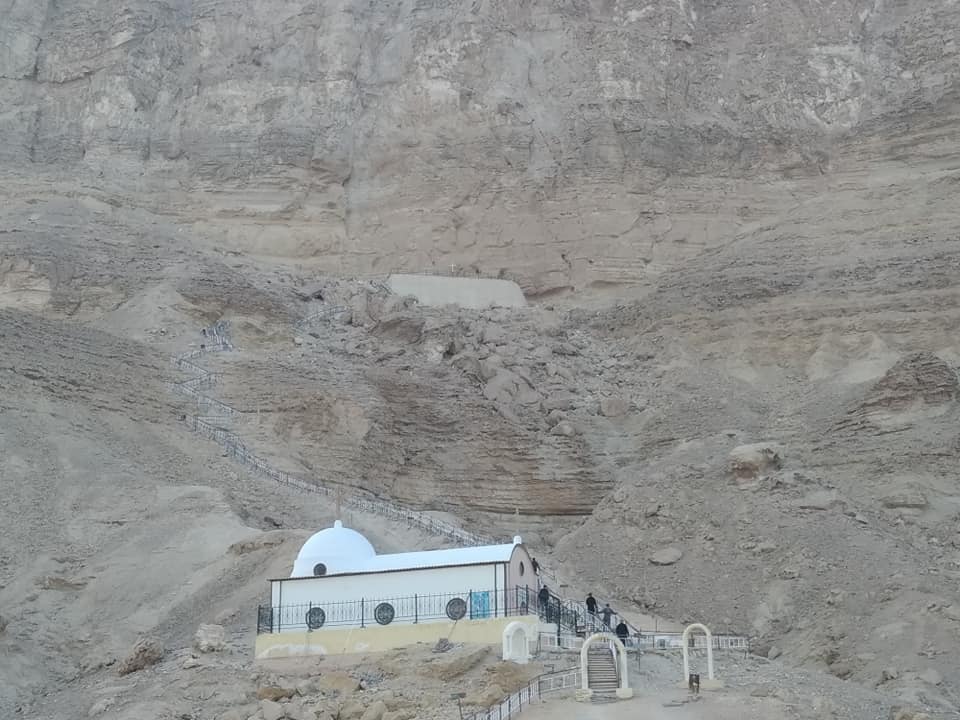
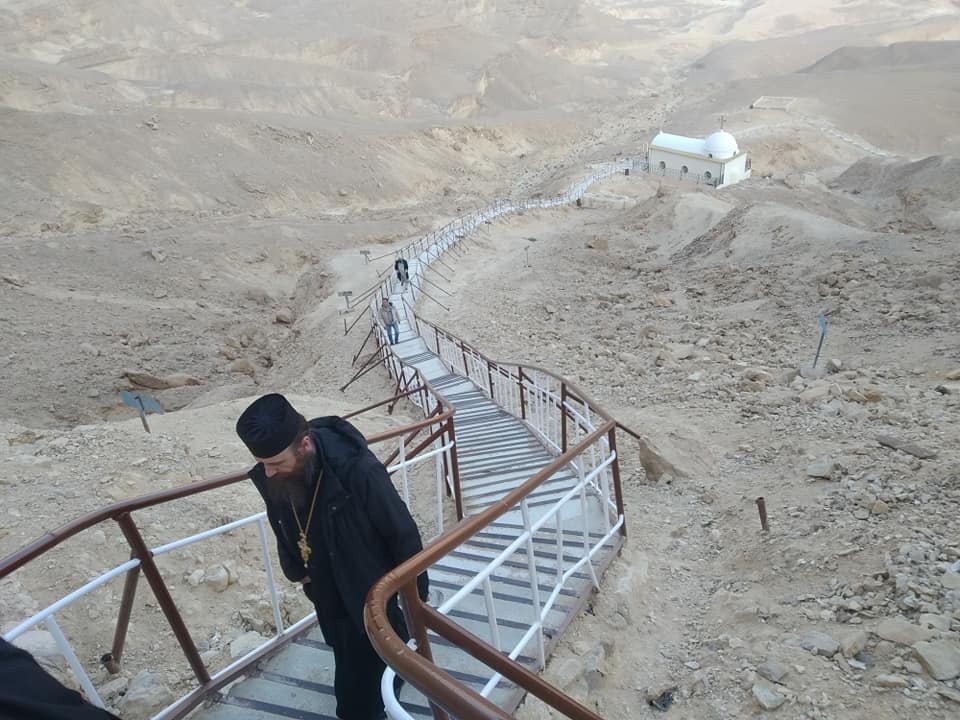
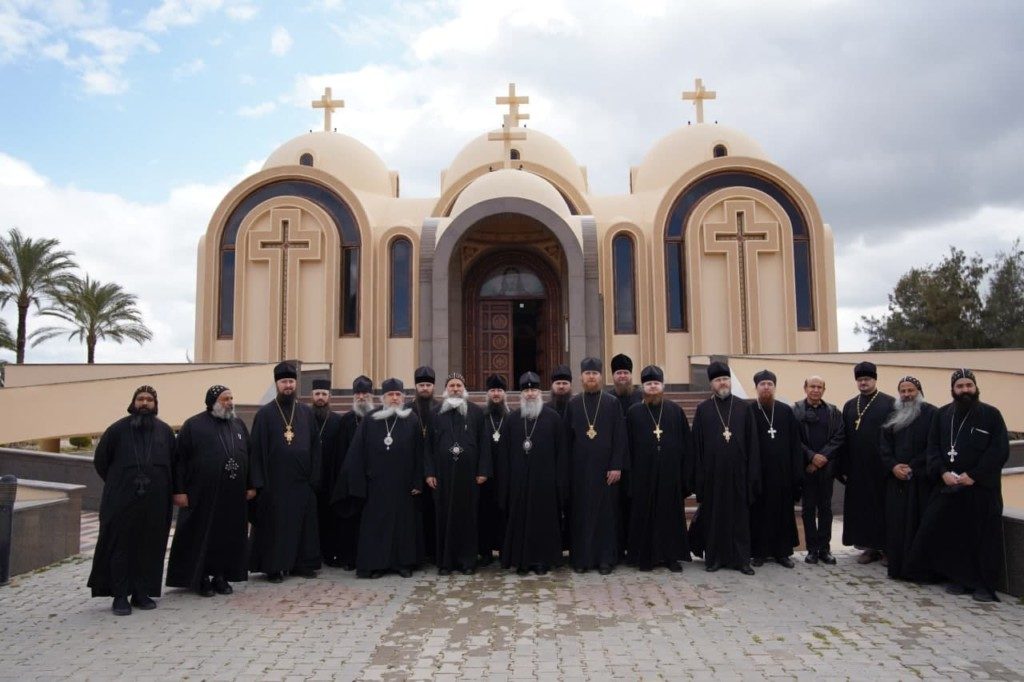
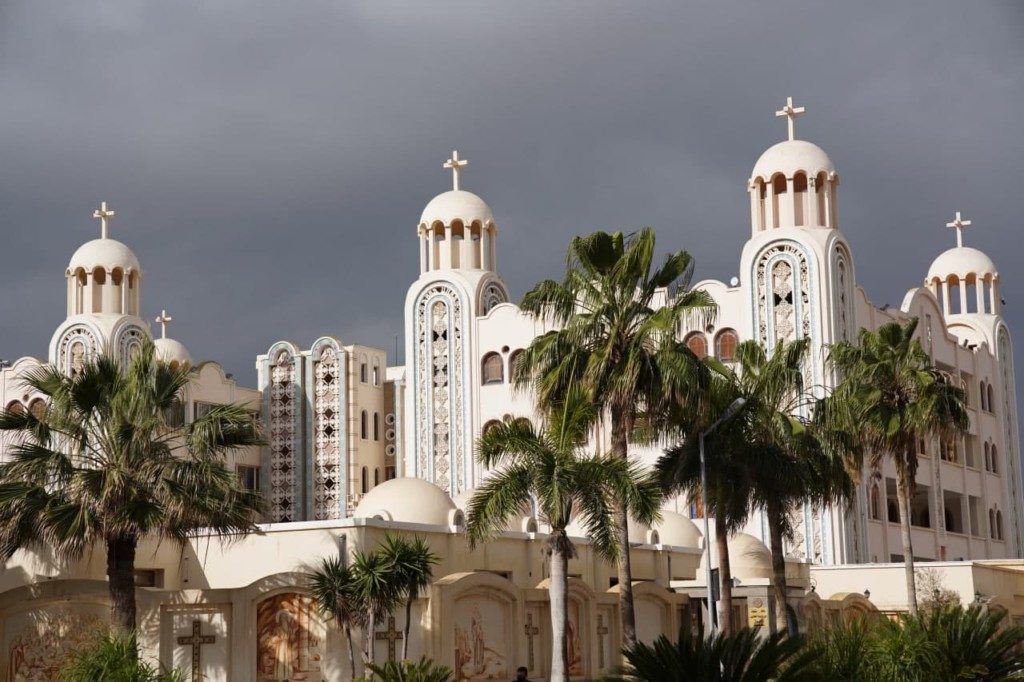
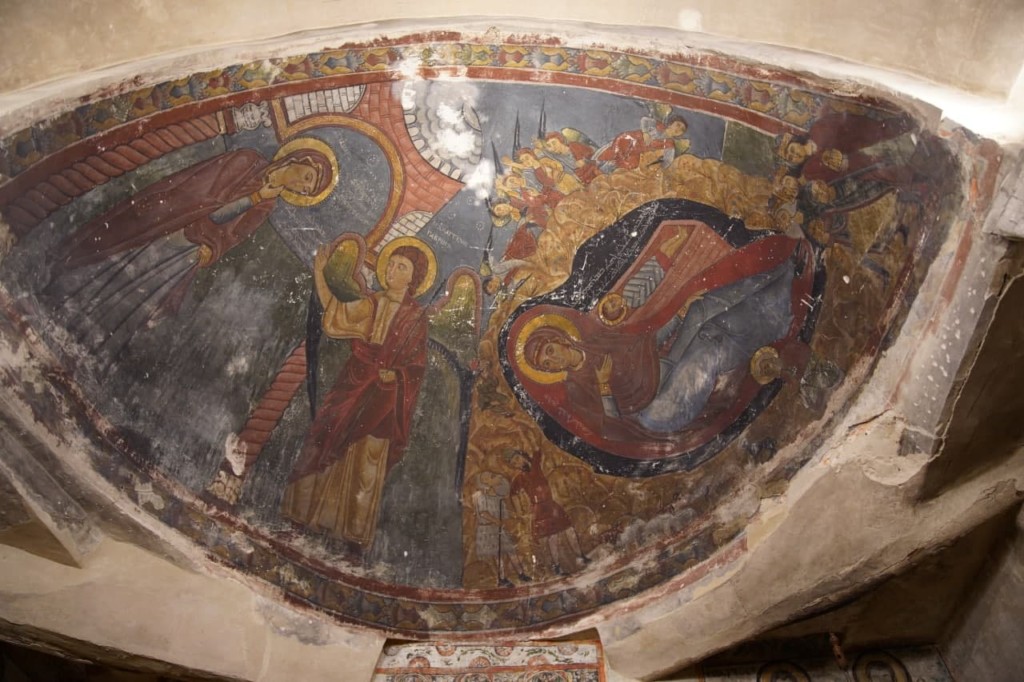
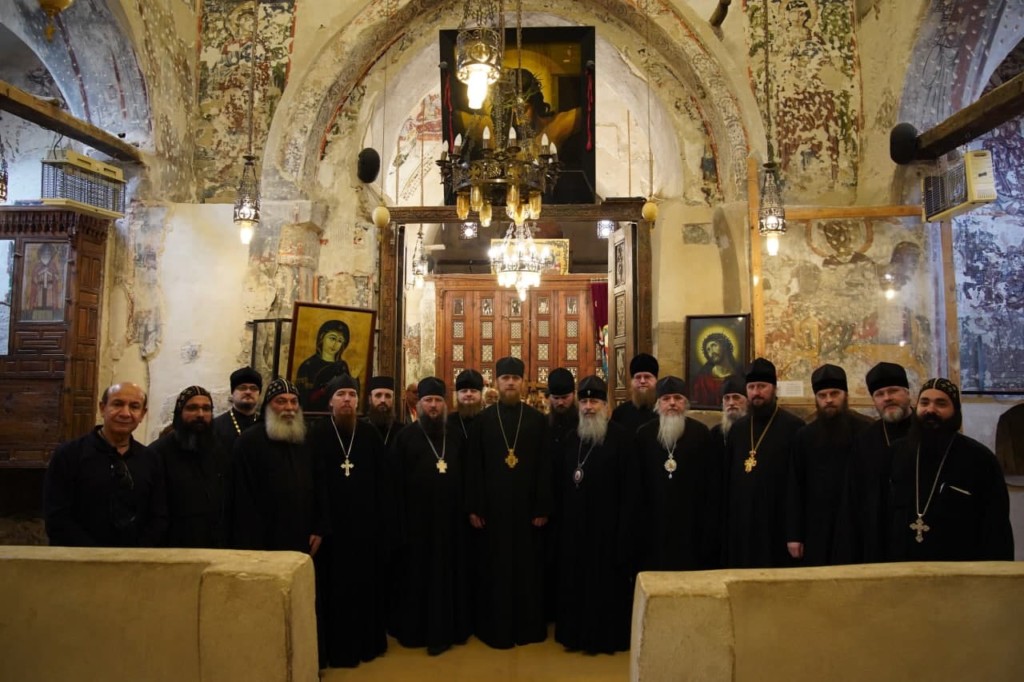
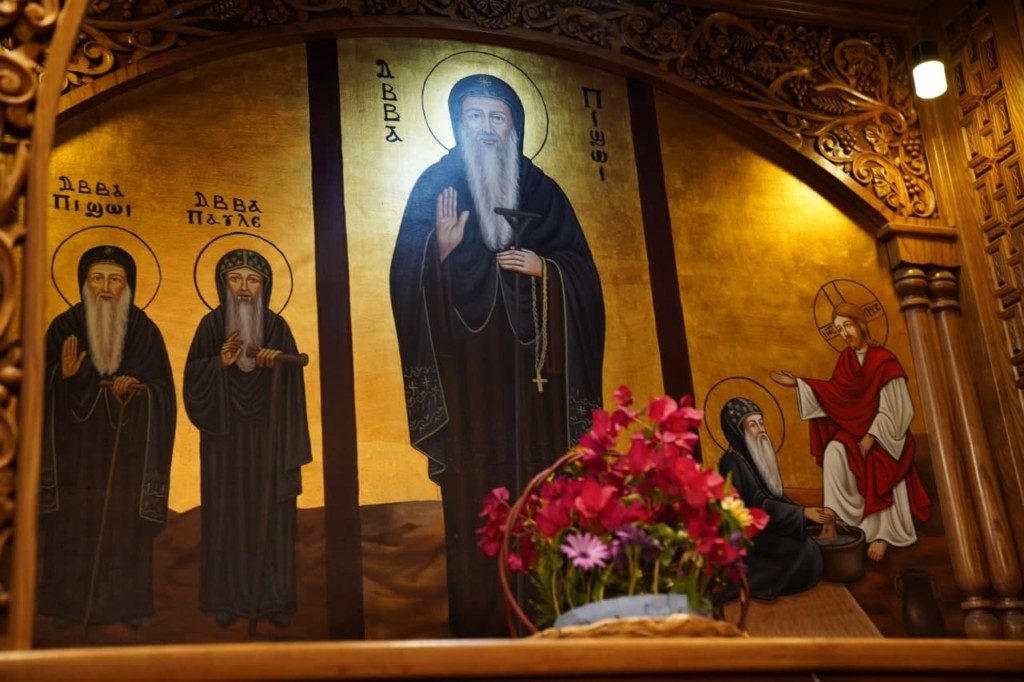
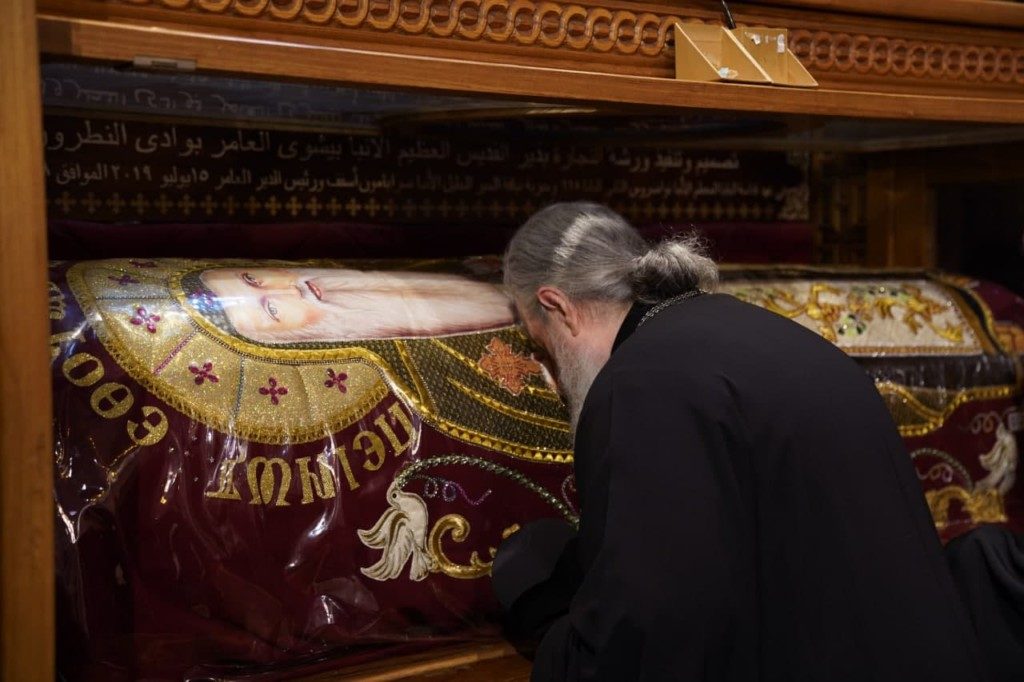

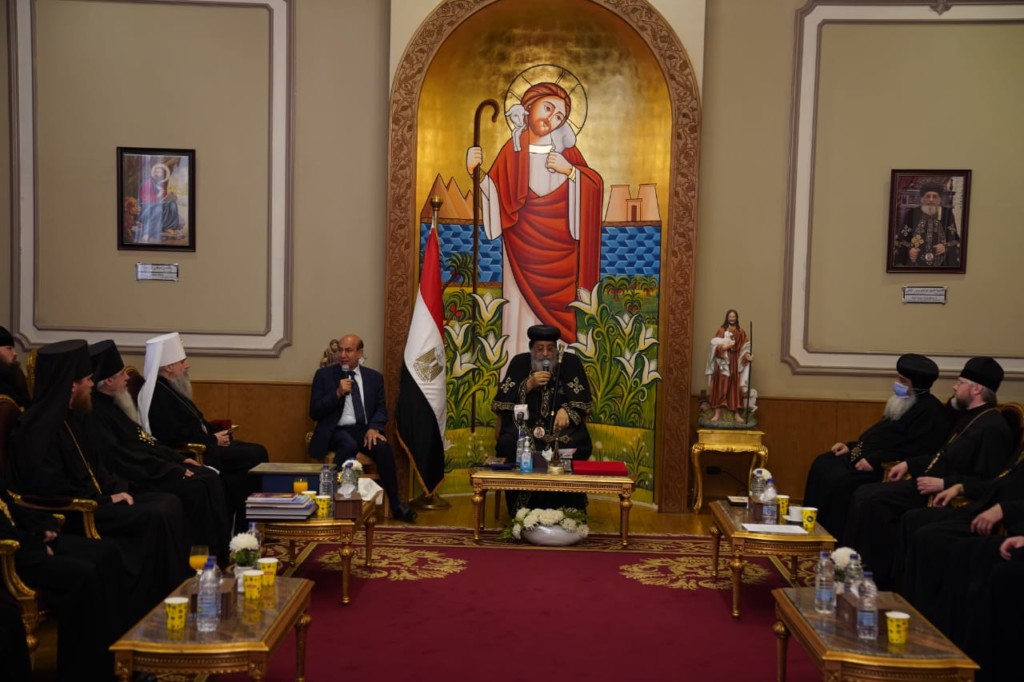
Fr om March 25 to April 1, 2021, with a blessing of His Holiness Patriarch Kirill of Moscow and All Russia and His Beatitude Metropolitan Onufry of Kiev and All Ukraine and at the invitation of His Holiness Coptic Patriarch Tawadros II, a delegation of abbots and brethren of the Ukrainian Orthodox Church’s monasteries was on a visit to Egypt.
The delegation included:
Metropolitan Arseny of Svyatogorsk, abbot of the Svyatogorsk Laura of the Dormition - head of the delegation;
·Bishop Tikhon of Gostomelsk, abbot of the Monastery of the Nativity of the Most Holy Mother of God in the Tserkovshchina hole;
·Bishop Feodosiy of Ladan, abbot of the Nezhin Monastery of the Annunciation;
Archimandrite Varlaam (Ozimok), abbot of the St. Cyril’s Monastery in Kiev;
Archimandrite Vladimir (Gaponyuk), abbot of the Chartoryisky Monastery of the Elevation of the Cross;
Archimandrite Mark (Kushtan), abbot of the Monastery of the Resurrection in Uzhgorod;
Hieromonk Varnava (Shkurdod), abbot of the St. Nicholas Monastery, Kholmovka village, Bakhchisaray district;
Archimandrite Lazar (Tereshchenko) and Hieromonk Joseph (Georgitsa), monks of the Svyatogosk Laura of the Dormition;
Archimandrite Agafon (Opanasenko) and Hieromonk Feofil (Koshovenko), monks of the Kiev-Pechory Laura of the Dormition;
Archimandrite Damaskin (Lebed’), head of the library of the Kiev Theological Academy and Seminary;
Hegumen Germogen (Melnik), monk of the Skete of the Holy Spirit in the Pochaev Laura of the Dormition;
Archpriest Nikolay Danilevich, deputy head of the Department for External Church Relations, Ukrainian Orthodox Church.
The delegation was accompanied by Hieromonk Stephen (Igumnov), secretary of the Commission for Dialogue between the Russian Orthodox Church and the Coptic Church; Hieromonk Daud el-Antony, representative of the Coptic Church in Russia, and Dr Anthony Milad, representative of the Coptic Patriarchate.
The visit had as its aim to make a pilgrimage to common Christian holy places in Egypt and to develop relations between representatives of the Ukrainian and Coptic monkhood as part of the work of the Commission for Dialogue between the two Churches.
On March 25, the delegation arrived in Cairo. With a blessing of the Coptic Patriarch Tawadros II, they were met at the airport by Metropolitan Markos of Damietta and Kafr al-Shaykh, who was to accompany the delegation during their trip.
The delegation made their first stop at the Convent of Holy Martyr Damiana in northern Egypt. This convent was founded on the place where in the late 3d - the early 4th centuries St. Damiana and forty virgins laboured to glorify God by their martyrs’ blood. Damiana came fr om a rich family. Her father was the governor of the Roman province of Northern Egypt; he raised her in the Christian faith. Entering in the matrimonial age, she refused to marry and asked her father to arrange an abode for her far fr om the city where she could live a life dedicated wholly to God. She was joined there by forty virgins. With a blessing of the local bishop, a convent was established for the maidens there with Damiana becoming its abbess. It is believed to be the first convent to emerge in the whole Christendom.
In the early 4th century, Emperor Diocletian began persecutions during which Mark, Damiana’s father, renounced Christ and made a sacrifice to idols. For this, he was shamed by his daughter, who said that he had better accepted death as a martyr for Christ would do than lived on earth as a servant of Satan. Inspired by her words, Mark went to the emperor and openly confessed that he was a Christian, for which he was beheaded. Diocletian also found out that Mark’s martyrdom was inspired by his daughter and sent to Damiana’s convent a hundred soldiers. Despite threats and many ordeals to which the holy woman was subjected, she did not renounce Christ, and every time an angel of the Lord would come to heal her wounds. Many soldiers, inspired by her martyrdom and preaching, converted to Christ. Ultimately, Damiana and the forty virgins were beheaded. Soon after that, Egyptian Christians found their incorruptible bodies and solemnly buried them.
The Ukrainian pilgrims venerated the tomb of the holy women-martyrs and sang the praise to them. The guests also saw other shrines in the convent and some facilities in its territory, among them two churches erected in the 4th century by Queen Helen Equal-to-the-Apostles during her visit to Egypt exactly at the place where martyr Damiana performed her feat. There is a small baptistery in one of these churches. It is dated to the 4th century as well. It shows that already at that time, in the Christian Church there was a practice of the baptism of infants. Depicted on the main icons of the church are the holy martyrs clad not in monastic robes but in white garments symbolizing innocence and chastity because it was the first Christian convent that admitted exclusively virgins. The guests also saw the convent’s farm and workshops, in which today’s novices do their tasks. In the cathedral church of the convent, the delegation venerated the holy relics of the virgin martyrs.
On the same day, the delegation visited the town of Saha located not far fr om the St Damiana Convent. This place is one of the first stops made by the Holy Family on route to Egypt. As is known fr om the Gospel, the Most Holy Mother of God, righteous Joseph the Spouse and the Divine Enfant Christ, seeking to escape Herod’s persecution, had to flee to Egypt, where they hid for over three years. In the beginning they walked in the north of the Sinai Peninsula and then through the Nile delta to stop at the small town of Saha. Unlike other such stops (there were eighteen of them altogether) where, according to tradition, the Holy Family was given a warm welcome, they did not encounter a similar welcome there as nobody gave them even water. But the Divine Enfant and the Most Holy Virgin revealed a miracle: Mary, exhausted by the travel by carrying the Saviour in her arms for the most part of their wandering, put Her Son down on the stone land and a spring flew up fr om it. There is an imprint of the Divine Infant’s foot on the stone, which is reverentially safeguarded by Egyptian Christians and kept today in the Coptic church built on the spot and dedicated to the Most Holy Mother of God. The Ukrainian pilgrims venerated this great shrine. Metropolitan Arseny gave the church as a gift an icon depicting the imprint of the Most Holy Mother of God’s foot in Pochayev, noting that the history of this miraculous appearance is very much like what happened two thousand years ago in the Egyptian land.
In the morning of March 26, the delegation visited the Monastery of Great Martyr Menas of Kotuan located in Mariut Desert near Alexandria. It is one of the modern monasteries of the Coptic Church. It is built in the place where the church dedication to this man of God has existed since the 4th century. Today St. Menas is one of the heavenly intercessors most loved by the Coptic people. His name is given to children during Baptism and monks during their taking monastic vows and parish churches are built in honour of his man of God. Formerly, his veneration as one of the first Christina martyrs was also especially popular in the lands of historical Rus’ including the boundaries of today’s Ukraine.
The guests were solemnly welcomed by the brethren of the monastery led by the abbot, Bishop Cyril. The delegation venerated the relics of the great martyr and other shrines, among them the part of the relics of St. Mark and many common Christian saints of early centuries. At the request of the abbot and brethren, Metropolitan Arseny signed the honorary guest book. In conclusion, the guests visited the grave of Cyril VI (1959-1971), one of the outstanding Coptic Patriarchs, who is now glorified by the Church as a saint, and the site of the ancient settlement named after the great martyr Menas (Abu Menas), where one of the early churches dedicated to him used to be built and to keep his honourable relics.
On the same day, the UOC delegation went to the Natrun Desert (Wadi El Natrun), the birthplace of Christian monasticism.
The Monastery of St. Macarius the Great was the first one to be visited by the delegation in the Natrun Desert. It counts its history since the year 360 and has today about one hundred forty monks. It was there that St. Macarius died a beatific death.
The guests from Ukraine venerated the honourable relics of one of the founders of the Egyptian and, on the whole, Christian monasticism and relics of other holy starets who pursued monastic life there later and who bore the name of Macarius. They also venerated the incorruptible remains of Venerable Paphnutius the Great, Pimen the Great and the parts of the relics of Prophet Elisha and John the Baptist.
At the St. Macarius Monastery there are also the relics of Venerable John Colobus and 51 martyrs who lived in the 5th century. Forty-nine of them were those brethren of the monastery together with their abbot who voluntarily refused to flee from the barbarians attacking the monastery and chose death for Christ. Two laymen matured together with them. They were pilgrims from Constantinople - a grandee of the imperial court and his 9 years old son. According to the tradition, the boy miraculously saw angels, who came down from heaven and laid shining wreaths on the martyrs, and wished to perform the same feat and induced his father to enter the monastery and share the lot of the martyrs. At the relics of 51 martyrs, there were numerous cases of the miraculous healing of monks and other worshippers who prayed near these relics.
The delegation saw the monastery library - a depository of thousands of ancient manuscripts written by monks of the Natrun hermitage. Metropolitan Arseny and members of the delegation had a talk with brethren (the abbot of the monastery, Bishop Epiphanius died a tragic death in 2018).
Especially remarkable was the visit to the nearby famous Skete wh ere the first ever Christian monks pursued monastic life as hermits. As is known, the statute drafted by St. Macarius was of eremitic-coenobitic nature and was intended for monks in the Natrun hermitage and Skete, who lived mostly a solitary life and used to gather together on Saturdays and Sundays for a common prayer and the Divine Liturgy. Later the word ‘skete’ found its way into many languages of the world and became a common noun. In one of the eremitic cells, the pilgrims met with one of today’s anchorites - 92 years old Abba Menas.
On March 27, the delegation visited other monasteries in the Natrun hermitage, namely, the Monasteries of the Romans (al-Baramus), the Monastery of the Syrians (as-Suriani) and the Monastery of St. Paisius the Great (Anba Bishoi).
The Monastery of the Romans, founded in circa 335 by St. Macarius the Great is the first male monastery in the Christendom. It was named in memory of Maximus and Domitius, sons of the Roman Emperor Valentinian, who pursued ascetic life there under the guidance of this great ascetic. Today there are over one hundred coenobites living in it. The pilgrims venerated the parts of the relics of Ss Moses Murin and Isidorus, who once lived the life of hermits there. This monastery gives special honour to St. Arsenius the Great, who lived in it. Being a prominent grandee of the imperial court and the tutor of the emperor’s children, he abandoned the temporal fame and retreated to the Egyptian desert to pursue monastic feats. In the distant part of the monastery’s church, there is the column behind which St. Arsenius was humbly standing and praying not to be recognized by brethren. Later he became one of the most famous ascetics of the Natrun hermitage and had to leave the place seeking to escape from the glory around his feats and from those who rushed to him. He found a blessed repose in the territory in what is known today as Cairo, willing to avoid the burial he deserved. Therefore, there is no authentic information about the place wh ere his honourable relics lie in rest.
Metropolitan Arseny and the delegation said a prayer at the column of St. Arsenius the Great, saw the 4th century refectory of the monastery in which the first Christian monks used to hold agapes, common repasts after the liturgy, and then to withdrew to their cells. Surviving in this room is a stone table and benches, as well as a stone dais from which the abbot read out Holy Scriptures during meals. Among the monastery buildings, the most noticeable one is a citadel typical for ancient monasteries in Egypt, which served the monks as a defence from numerous attacks of wandering looters.
After that the delegation visited the Monastery of the Syrians (as-Suriani) founded in the late 4th century by disciples of Paisius the Great on the spot wh ere their remote cells were located and named in memory of the monks from Syria who used to stay there for several centuries. The most renowned of them was St. Ephrem the Syrian who came there to meet St. Paisius the Great. In the monastery territory, one can see a tree that bears fruit to this day. It has grown from St. Ephrem’s crozier stuck into the soil - a living testimony to the meeting of the two great ascetics. The Ukrainian pilgrims also saw the cell, in which St. Paisius prayed, and the 8th-17th century frescos and said in the monastery church the Lenten prayer of St. Ephrem the Syrian with 16 bows. They had a talk with the abbot and brethren of the monastery who number about two hundred fifty today. The monks gave a warm welcome to the pilgrims and explained the peculiarities of the monastery statute. Typically, they observe the strong traditions of eremitic life. In the 5th-7th centuries, the monastic community as a whole was scattered among cells in the hermitage and used to assemble only for Sunday and festive liturgies. This practice has partly survived to our days: today the monastery numbers ten anchorites and its statute does not provide for a common meal on weekdays.
Then the delegation visited the Monastery of St. Paisius the Great founded by this saint circa 257. It has always played a considerable role in the life of Egyptian Christianity: as far back as the 4th century, there were up to 5 000 men in it and since that time the monastic work has not been ever interrupted there. The monastery has produced many hierarchs for the Coptic Church; among them today’s Patriarch Tawadros II. There is also one of the administrative compounds of the Coptic Patriarchate, which hosted many historic events as well as meetings of the Joint Commission for Theological Dialogue between the Orthodox Church and the Oriental Churches and regular sessions of the Holy Synod of the Coptic Church. The guests venerated the relics of numerous old saints lying in the monastery and visited the grave of Coptic Patriarch Sphenoidal III (1971-2012) buried there.
On Sunday, March 3, in conclusion of the delegation’s stay in the Monastery of St. Paisius, Metropolitan Arseny, assisted by members of the delegation, celebrated the Divine Liturgy. After the service, the pilgrims went to Cairo making a stop at its Giza suburb. There the guests were given a solemn welcome by General Bishop Theodosius of Giza responsible for the pastoral care of the Coptic communities in the canonical bounds of the Moscow Patriarchate. In the territory of the cathedral, a solemn reception was given in honour of the high guests from the Ukrainian Orthodox Church. Along with the clergy and parishioners, the delegation was greeted by participants in the Coptic Church’s youth organizations who assembled in Giza for the occasion.
On March 29, the guests visited the greatest holy places in the historical center of the Egyptian capital city: the grotto in which, according to tradition, the Divine Enfant and His Most Holy Mother and St. Joseph found shelter; the church built in the grotto in 58 - one of the very first to be built in the Christian Church, and the church of Martyrs Sergius and Bacchus in which parts of their holy relics are kept. In that place, there is also a baptistery of the 4th century. Among the places visited by the pilgrims were the church of the Great Martyr Barbara, in which a part of her relics is kept along with parts of the relics of Martyrs Juliana, Damiana and Filomana of Rome; the famous Coptic ‘Hanging Church’; the ‘Myallaca’ Convent of the Great Martyr George the Conqueror (Mar Girgis) and the Convent of Martyr Mercurius the Philopater (Abu Seifen). The Ukrainian Orthodox Church delegation was given a solemn welcome to these convents by their abbesses and sisters.
The delegation also went to the church of the Most Holy Mother of God in the Maadi area. It was built on the spot wh ere the Holy Family managed to break away from pursuers in their wandering in Egypt by crossing to the other bank of the Nile. There is the surviving subway used by the Holy Family. In the 20th century, a miracle happen in that place as a river wave washed ashore a Bible open at the page with words, ‘Blessed be Egypt my people’ (Is. 19:25). According to tradition, once in the same place a pharaoh’s daughter fetched from the water a basket with the enfant Moses. The pilgrims also visited the cave church of St. Simon the Tanner under the vaults of Mount Mokattam, which, according to the Coptic tradition, miraculously moved in the air from one place to another, which made the then Caliph of Egypt al-Mu’izz to admit publicly the truth of the Christian faith.
In the Convent of Martyr Theodore Stratilates (Amir Tadros), the delegation was given a warm welcome by Mother Superior Edrosis and convent sisters. The Mother Superior recalled with a special warmth her visits to Russia together with His Holiness Patriarch Tawadros II in November 2014 and as a member of the Coptic abbots and abbesses in September 2019 and spoke about numerous miracles linked with the construction of her convent located in an unsafe part of the Egyptian capital city. The mother superior conveyed as a gift to His Beatitude Metropolitan Onufriy of Kiev and All Ukraine a painted by sisters icon of a heavenly patron of the convent, St Onuphrius the Great who enjoys special veneration in the convent. Once, through the intercession of this man of God, a spring of water was miraculously revealed to exist to this day. In the convent, the guests also venerated a part of the relics of Holy Martyr Marina and a myrrh-exuding icon of the Great Martyr Theodore Stratilates.
That same day, the delegation came to the Eastern (Arabian) Desert near the Red Sea to see there the Laura of St. Anthony the Great and the Monastery of St. Paul of Thebes.
On March 30, the guests visited the Monastery of St. Paul of Thebes. At the monastery gates, they were warmly welcomed by its abbot, Bishop Daniel, head of the Coptic Church Commission for the Affairs of Monasteries and Monkhood, who had visited the Moscow Patriarchate on several occasions as member of monastic delegations (in June 2017 and September 2019).
The guests visited the church of St. Paul to venerate his tomb placed on the spot wh ere lions who miraculously came from the desert dug a grave for the deceased starets. His Eminence Daniel introduced the Ukrainian pilgrims to the history of the monastery, showed them its shrines - an ancient mill and an old refectory, as well as the St. Paul spring, which flows down from the 300-meters height directly from the hill and gives the brethren about 4 cubic meters of water daily.
On March 31, the Ukrainian delegation arrived in the Monastery of St Anthony the Great. There, they ascended the mount to the cave of St. Anthony in which they celebrated a thanksgiving. At the bottom of the mount they were met by the abbot of the monastery, Bishop Justus, who showed them a new cave church dedicated to the Lord’s Cross and the Resurrection of Christ built especially for those pilgrims who cannot climb up the hill because of their infirmity and the St. Anthony spring that begins the height of over 400 meters and brings to the monastery from 80 to 100 cubic meters of water daily.
Accompanied by the abbot, Metropolitan Arseniy and his party made a tour of the laura’s vast territory, familiarising themselves with its manifold household and visiting monastery churches with their shrines and historical points of interest. Among them, the surviving wall autograph of the famous head of the Russian Ecclesiastical Mission in Jerusalem, Archimandrite Porphyrius (Uspensky), who visited the place in the middle of the before last century.
On April 1, the delegation returned to Cairo to meet with Coptic Patriarch Tawadros II. Present at the meeting were Bishop Daniel, head of the Coptic Church commission for the affairs of monasteries and monkhood. Greeting the guests, His Holiness Tawadros said in particular, ‘I am very glad to see the Ukrainian Orthodox Church delegation visiting Egypt. It is your first visit to our monasteries and convents and our churches. Our Church carries out her service to Jesus Christ basing herself on the three foundations. The first foundation is the right Christian doctrine and education of our faithful. The second foundation, on which our Church stands are our numerous martyrs who give their blood for the Church. We call the Coptic Church a Church of martyrs and as she produced martyrs in the early centuries and has produced them throughout her history, so she will produce many martyrs now too. The first monk was an Egyptian, and the first monastery in the world was founded on the Egyptian soil. And we are very pleased and happy that you have been able to visit our monasteries’.
His Holiness Patriarch Tawadros also spoke about the present state and life of the Coptic Church. In particular, the Patriarch said that today over 15 million Egyptian Christians (Copts) live in Egypt and two more millions live in the diaspora, wh ere there are about 500 parishes of the Coptic Church.
The Primate of the Coptic Church asked to convey warm greetings to His Holiness Patriarch Kirill of Moscow and All Russia and to the head of the Moscow Patriarchate’s department for external church relations, Metropolitan Hilarion of Volokolamsk.
The head of the Ukrainian Orthodox Church’s delegation, Metropolitan Arseniy of Svyatogorsk, greeting Patriarch Tawadros, spoke about the impressions they received from their pilgrimage, ‘From our childhood we read the Lives of the Fathers of Egypt. In these days, we have seen with our own eyes the places of their feats. Visiting monasteries in Egypt, one of our brothers said that we feel a spiritual reload, a spiritual renewal. We cite St. Macarius and St. Arsenius the Great; we are accustomed since our childhood to read Paul of Thebes and Anthony the Great. His Eminence noted that he noticed a great number of believers in Egyptian churches and the fervent ardour for monkhood among the Egyptian Christian youth, which shows the spiritual health of the people. Metropolitan Arseniy also spoke about the life and the present state of the Ukrainian Orthodox Church and cited statistical data on the number of monasteries and parishes.
After the conversation with Patriarch Tawadros, the Ukrainian delegation visited the Cathedral of St. Mark, in which they venerated his relics and the relics of St. Athanasius of Alexandria.
Early in the morning of April the 2th, the delegation departed back for Kiev.
DECR Communication Service
